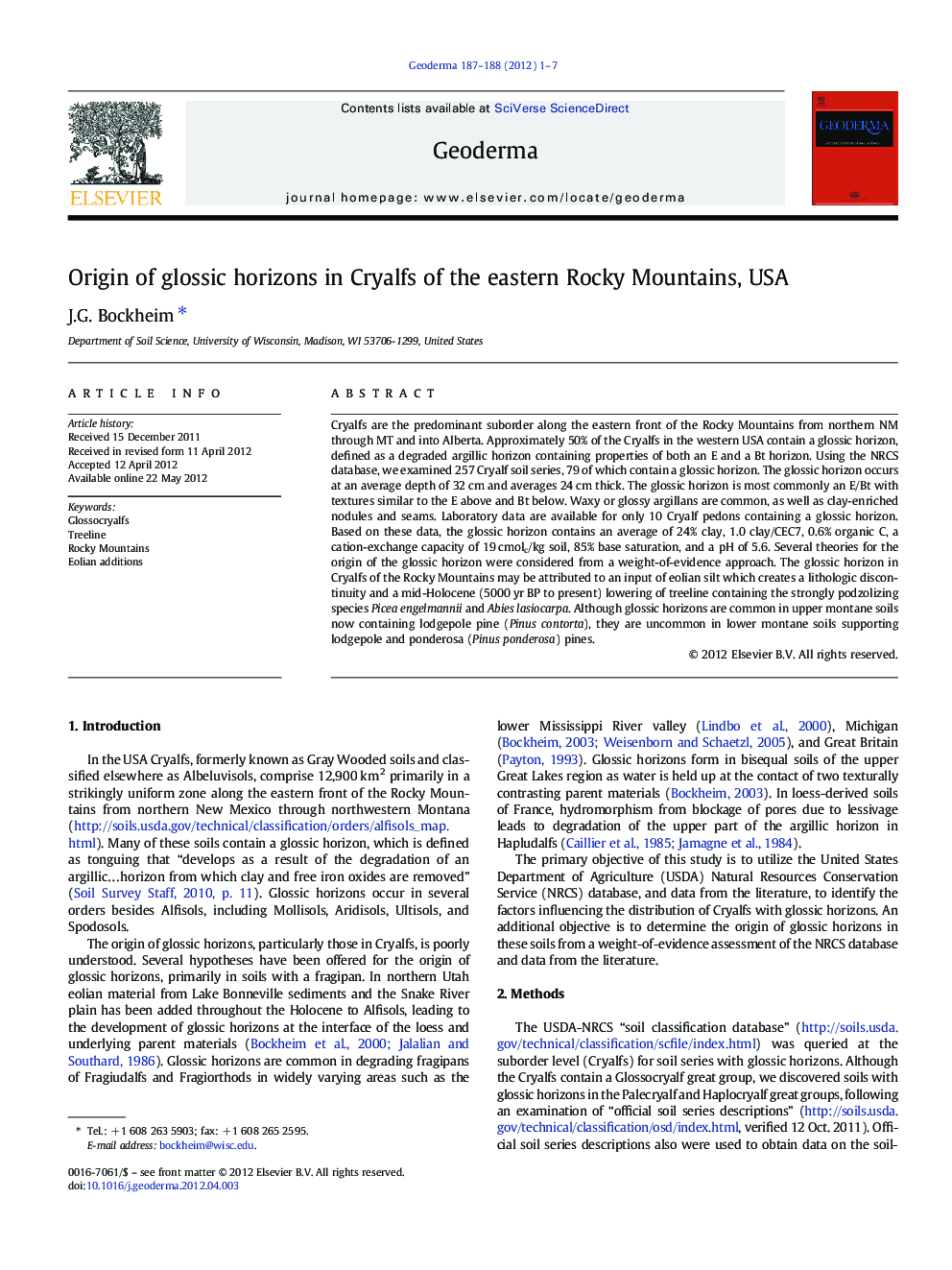| کد مقاله | کد نشریه | سال انتشار | مقاله انگلیسی | نسخه تمام متن |
|---|---|---|---|---|
| 4573798 | 1629494 | 2012 | 7 صفحه PDF | دانلود رایگان |

Cryalfs are the predominant suborder along the eastern front of the Rocky Mountains from northern NM through MT and into Alberta. Approximately 50% of the Cryalfs in the western USA contain a glossic horizon, defined as a degraded argillic horizon containing properties of both an E and a Bt horizon. Using the NRCS database, we examined 257 Cryalf soil series, 79 of which contain a glossic horizon. The glossic horizon occurs at an average depth of 32 cm and averages 24 cm thick. The glossic horizon is most commonly an E/Bt with textures similar to the E above and Bt below. Waxy or glossy argillans are common, as well as clay-enriched nodules and seams. Laboratory data are available for only 10 Cryalf pedons containing a glossic horizon. Based on these data, the glossic horizon contains an average of 24% clay, 1.0 clay/CEC7, 0.6% organic C, a cation-exchange capacity of 19 cmolc/kg soil, 85% base saturation, and a pH of 5.6. Several theories for the origin of the glossic horizon were considered from a weight-of-evidence approach. The glossic horizon in Cryalfs of the Rocky Mountains may be attributed to an input of eolian silt which creates a lithologic discontinuity and a mid-Holocene (5000 yr BP to present) lowering of treeline containing the strongly podzolizing species Picea engelmannii and Abies lasiocarpa. Although glossic horizons are common in upper montane soils now containing lodgepole pine (Pinus contorta), they are uncommon in lower montane soils supporting lodgepole and ponderosa (Pinus ponderosa) pines.
Subalpine soils of the eastern Rocky Mountains, USA, often contain a glossic horizon (shown) that results from degradation of an argillic horizon (Bt) into an E/Bt.Figure optionsDownload as PowerPoint slideHighlights
► Existing data for Cryalfs with glossic horizons are collected.
► Glossocryalfs are most common in the eastern Rocky Mountains.
► A glossic horizon is a degraded Bt horizon with E horizon features.
► Glossic horizons occur in subalpine soils influenced by eolian silt.
► Glossic horizons may result from mid-Holocene climate and vegetation changes.
Journal: Geoderma - Volumes 187–188, October 2012, Pages 1–7